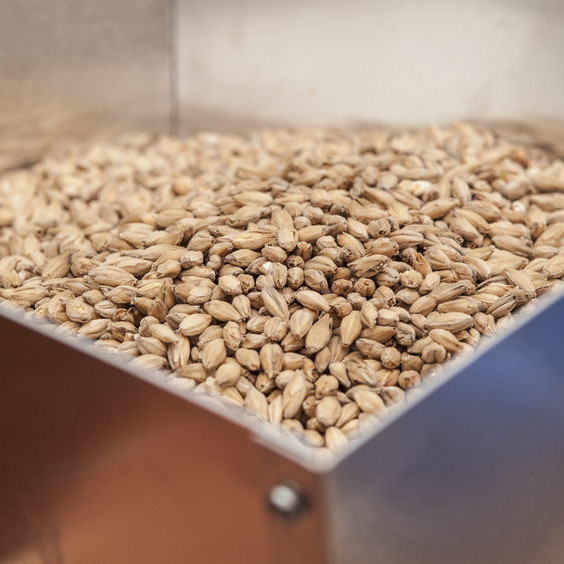
Malt
Also known as Malting
What is Malt?
Malt is the result of an enzymatic process for germinating grains and allowing them to sprout. Barley is the most commonly malted grain due to its high enzyme content. Other grains such as wheat, rice, oats, millets, corn, rye, sorghum and triticale can be made used as well.1 It includes:
- Simple carbohydrates
- Natural enzymes
- A wide variety of nutrients that can boost yeast activity during dough fermentation and improve baked goods quality.2
Origin
The name ‘malting’ is most likely derived from the Anglo-Saxon words ‘metan’ (to melt or dissolve something) and/or ‘malled’ (broken into fragments). This is a reference to the softening of kernels that accompanies grain germination at early brewing stages where malted barley is milled into a coarse flour. Malting, together with baking and brewing, represent the earliest manifestation of biotechnological processes that date back to 5000 BC in Sumerian times.1
How does it work?
To make malt, seeds (viable grains) are allowed to partially germinate under controlled conditions. The process encompasses four operations:3,4
1. Steeping. Grains are mixed with water in a stainless steel tank to evenly hydrate the kernels, resume metabolic activity and encourage germination. Important variables to monitor:
- Grain swelling (weight gain)
- Temperature (ambient conditions)
- Steep water replacement or “refreshing” (control microbial activity and eliminate extraneous materials)
- Aeration of steep water (compressed filtered air).
- Air-rest period between draining and re-flooding the grain bed
- Dissolved oxygen in steep water
- Steep water (potable with proper hardness and free from extraneous matter)
2. Germination. Steep water is drained and hydrated grains are recovered and allowed to germinate under controlled conditions. Mechanical agitation is important to avoid developed rootlets. Convective air currents can be applied to improve grain bed drying.
In this phase, enzymes required for the degradation of starches, β-glucans, arabinoxylans, proteins, are synthesized. The manifestation of these changes is the appearance of rootlets and the acrospire and loss of the physical integrity of grains. As a result, grains become friable.
3. Drying (kilning). Heat is applied to ensure enzymatic activity has ceased and immature or green malt is converted into its finished form.
4. Milling (to malted flour or powder).
Application
Grains intended for malt need to meet critical specifications, including:5
- High percentage of germination (High proportion of grains capable of germinating is essential as the process requires high levels of enzymes)
- High diastatic activity
- High germ viability
- Germination vigor and uniformity
- Low dormancy (time that takes for seed to germinate should be as short as possible)
Products from malting
Malt Flour
Malt flour is the product of the hydrated grain, usually barley, that is left to sprout unlocking the inherent enzymes of the grain. Once the germinated grains reach the desired germination it is heated to stop further germination. Then, the product is milled into a flour commonly used in the baking industry. This flour is diastatic. There is a non-diastatic flour which is produced by roasting the malted grain at high temperatures before milling.
Malt Barley Extract7
Malted barley extract is produced by hydrolyzing the diastatic malted grain (mixing the grain with hot water). This allows the naturally present enzymes of the grain to break down the starches into simple and complex carbohydrates. The resulting product of this process is called the mash. The temperature of the mash is raised which kills the active enzymes.
The mash is filtered and its insoluble particles are separated from the liquid, called the wort. The wort then goes through an evaporation process, reducing the solids content down to 80% and producing a product with similar viscosity to corn syrup or molasses. The obtained malted extract contains around 12% glucose and 45% maltose. Its high maltose content makes this product ideal as yeast food. The rest of the product is made up of around 30% complex carbohydrates (including soluble fiber) and up to 6% of protein and amino acids, along with other vitamins and minerals.
Malted barley extract can be commercially found as a syrup or as dry powder for bakers who require the use of dry ingredients. The dry powder is obtained from the vacuum drying of the syrup down to 4% moisture. Finally, malted barley extract is available in both the non-diastatic and diastatic form. The diastatic form refers to a product where some of the enzymes are still active.
Considerations for bakery applications
Diastatic malt (both as a flour or extract) can render a significant level of enzyme activity and a wide variety of sugars into the dough. Aspects such as dough softening and side-wall collapse in the baked good (keyholing in severe cases) can appear if formulating bread with excessive amounts of malted grains or diastatic malt.2
FDA regulations
Malt syrup or malt extract is considered a GRAS food additive (color and flavor).
References
- Boulton, C. “M.” Encyclopedia of Brewing, John Wiley & Sons, Ltd, 2013, pp. 388–416.
- Cauvain, S.P. “Raw Materials.” Baking Problems Solved, 2nd edition, Woodhead Publishing, Elsevier Ltd., 2017, pp. 40, 112.
- Swanston, J.S., and Wilhelmson, A. “Malting, Brewing, and Distilling.” Barley: Chemistry and Technology, 2nd edition, AACC International, Inc., LLC, 2014, pp. 193–212.
- Rosentrater, K.A., and Evers, A. “Malting, Brewing, Fermentation, and Distilling.” Kent’s Technology of Cereals. An Introduction for Students of Food Science and Agriculture, 5th edition, Woodhead Publishing, Elsevier Ltd., 2018, pp. 730–784.
- Serna-Saldivar, S.O. “Physical and Morphological Properties of Cereal Grains.” Cereal Grains: Laboratory Reference and Procedures Manual, CRC Press, Taylor & Francis Group, LLC, 2012, pp. 1–22.

